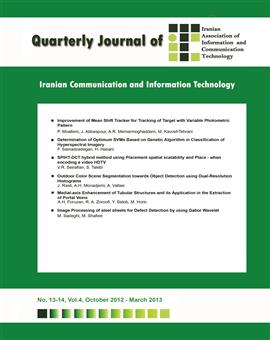-
-
List of Articles
-
Open Access Article
1 - Modification of medium transfer detector for target tracking with variable radiation pattern
Payman Moallem عليرضا معمارمقدم جواد عباس پور masoud kavoshtehrani -
Open Access Article
2 - Determining optimal support vector machines in classification of hyperspectral images based on genetic algorithm
farhad samadzadegan Hadis Hasani -
Open Access Article
3 - Applying the combined SPIHT-DCT method using spatial and spatial-temporal scaling to encode video images
vahid Seirafian siamak talebi -
Open Access Article
4 - Segmentation of exterior color images for the purpose of object recognition using histogram with double accuracy
javad rasti amirhasan Monjimie abbas vafaei -
Open Access Article
5 - Reinforcement of the central axis of tubular structures and its application in extracting the central axis of the portal vein
amirhossein forouza reza aghaeizade یوشی¬نبو ساتو ماساتوشی هوری -
Open Access Article
6 - پردازش تصاویر ورق های فولادی به منظور آشکارسازی عیوب به کمک موجک گابور
Mostafa Sadeghie masoud shafiee
-
The rights to this website are owned by the Raimag Press Management System.
Copyright © 2017-2026







